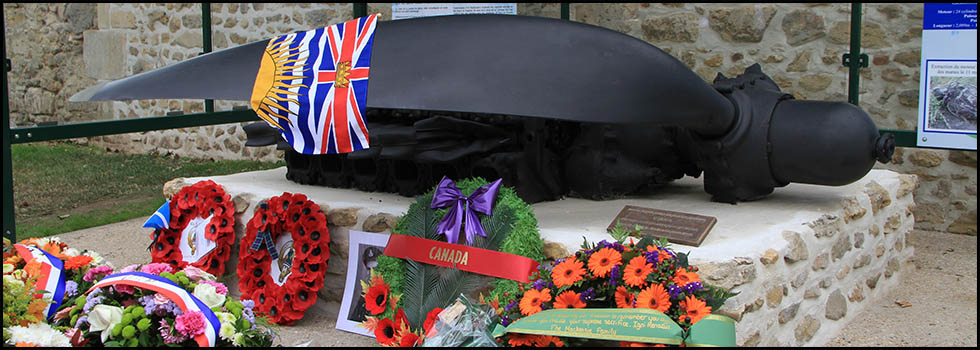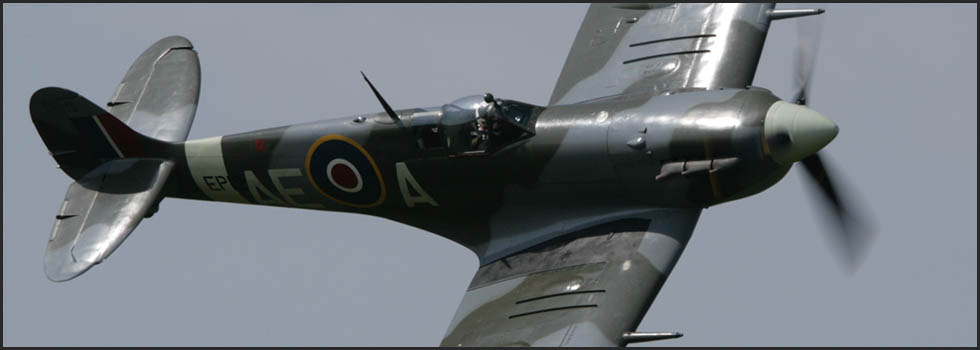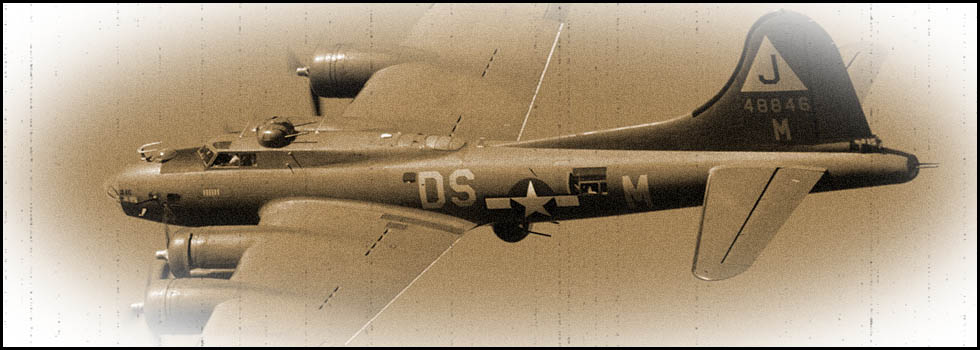15 September 1943
B-17F # 42-3452
100th Bomb Group, 350th Bomb Squadron
8th Air Force
Montiers (Oise)
Mission: the bombing of the Caudron-Renault factories in Boulogne-Billancourt and Courbevoie and Hispano-Suiza in Bois-Colombes. The aim was to massively hit the truck production plants serving the Reich.
This was the crew's 4th mission. 152 B-17s were deployed for the entire 8th Air Force. Having taken off from Thorpe-Abbots at around 5 p.m., two of the four engines of B-17 # 42-3452 were hit by flak just short of the target, but the aircraft managed to drop its cargo of bombs. The pilot was still trying to reach England. Having lost power, he was soon forced to abandon formation. Three enemy fighters soon appeared. One of them was apparently shot down by one of the gunners. The aircraft soon flew over the Saint-Just-en-Chaussée area. Black smoke was billowing from the engines. The pilot gave the order to evacuate. One by one, the 10 crew members managed to extricate themselves from the aircraft. Gradually, the abandoned Flying Fortress lost altitude, spun around for a long time and came down in a field near the village of Montiers. It was around 7 p.m.
The crew :
|
2nd Lt. Arthur M. VETTER |
Pilot |
25 |
Pittsburgh, Pennsylvanie |
|
2nd Lt. Donald G. SMITH |
Copilot |
Montana |
|
|
2nd Lt. Wendell K. McCONNAHA |
Navigator |
24 |
Blair,Nebraska |
|
2nd Lt. James G. BORMUTH |
Bombardier |
24 |
Baltimore, Maryland |
|
T/Sgt. Orval L. PARSONS |
Top turret gunner |
22 |
Ohio |
|
T/Sgt. John M. WAGNER |
Radio-operator |
22 |
Newport, Pennsylvanie |
|
S/Sgt. Edward W. FONTAINE |
Ball turret gunner |
26 |
West Warwick, Rhode Island |
|
S/Sgt. Hobart C. TRIGG |
Waist gunner |
21 |
Simpson, Illinois |
|
S/Sgt. Edward M. DALY |
Waist gunner |
21 |
Newark, New Jersey |
|
S/Sgt. Warren G. LUSH |
Tail gunner |
22 |
Atlanta, Nebraska |

Back row l. to r.: Edward Fontaine, William Edwards*, John Wagner, Hobart Trigg, Edward Daly, Orval Parsons.
* William Edwards was replaced during the mission by Warren Lush.
When night fell, Yves Hervé, André Violet and Jean Tumerelle set off in search of him, but they couldn't find him. They came up with the idea of whistling the Tipperary. Arthur Vetter was immediately discovered. After shaking hands, he was taken to Raymond Violet's farm.

2nd Lt. Arthur Vetter
S/Sgt. Warren Lush touched down near the village of La Neuville-Roy, where he was quickly surrounded by several Frenchmen who seized his parachute and Mae-west. He was taken to a farm. Pierre Bergère, alias “Alexandre”, a Compulsory Labor Service refractory and leader of a detachment of the “Jacques Bonhomme” Resistance group, quickly took him by bike to Pronleroy, to the farm run by Marcel Hervé, his wife and their son Yves. That evening, he was taken to Raymond Violet's neighboring farm, where he was reunited with his pilot Arthur Vetter.
Picked up by farmer Jacques Buquet and an employee of his farm, John Wagner was transported that evening in a chair across the plain to Pronleroy. Suddenly, the Violet family heard a loud knock on their farm gate. They were stunned. The lights were quickly turned off. Raymond Violet was surprised to see that it was his brother-in-law, Jacques Buquet, who had brought an airman. John Wagner was reunited with Arthur Vetter and Warren Lush.
The next day (September 16), in order to escape the Germans searching for them, they went into hiding in the woods. A German reconnaissance plane was flying overhead. As night fell, they walked across the fields to a farmhouse. They were fed and then slept in a barn. On the morning of September 17, John Wagner, who had difficulty walking, was taken by car to Clermont. In the evening, Arthur Vetter and Warren Lush arrived at another farm, where some Frenchmen showed them their weapons (Note: one of the two farms where the airmen stayed was Ernest Blanchet's in Fouilleuse). The next day, September 18, Gaston Legrand drove them on his motorcycle to his home in Clermont, where they met up with John Wagner.
On September 15, 1943, according to the testimony of Plainval resident Charles de Jandin, an airman landed by parachute on the plateau near the road to Montdidier, between Plainval and Saint-Just-en-Chaussée. This airman, most likely 2nd Lt. Wendell McConnaha, went into hiding alone in the woods. That same evening, he was taken in at the house known as “Bel Air”, before being quickly taken to the château de Wavignies, where he was looked after by Henri and Yvonne Vincenot, the château's caretakers.
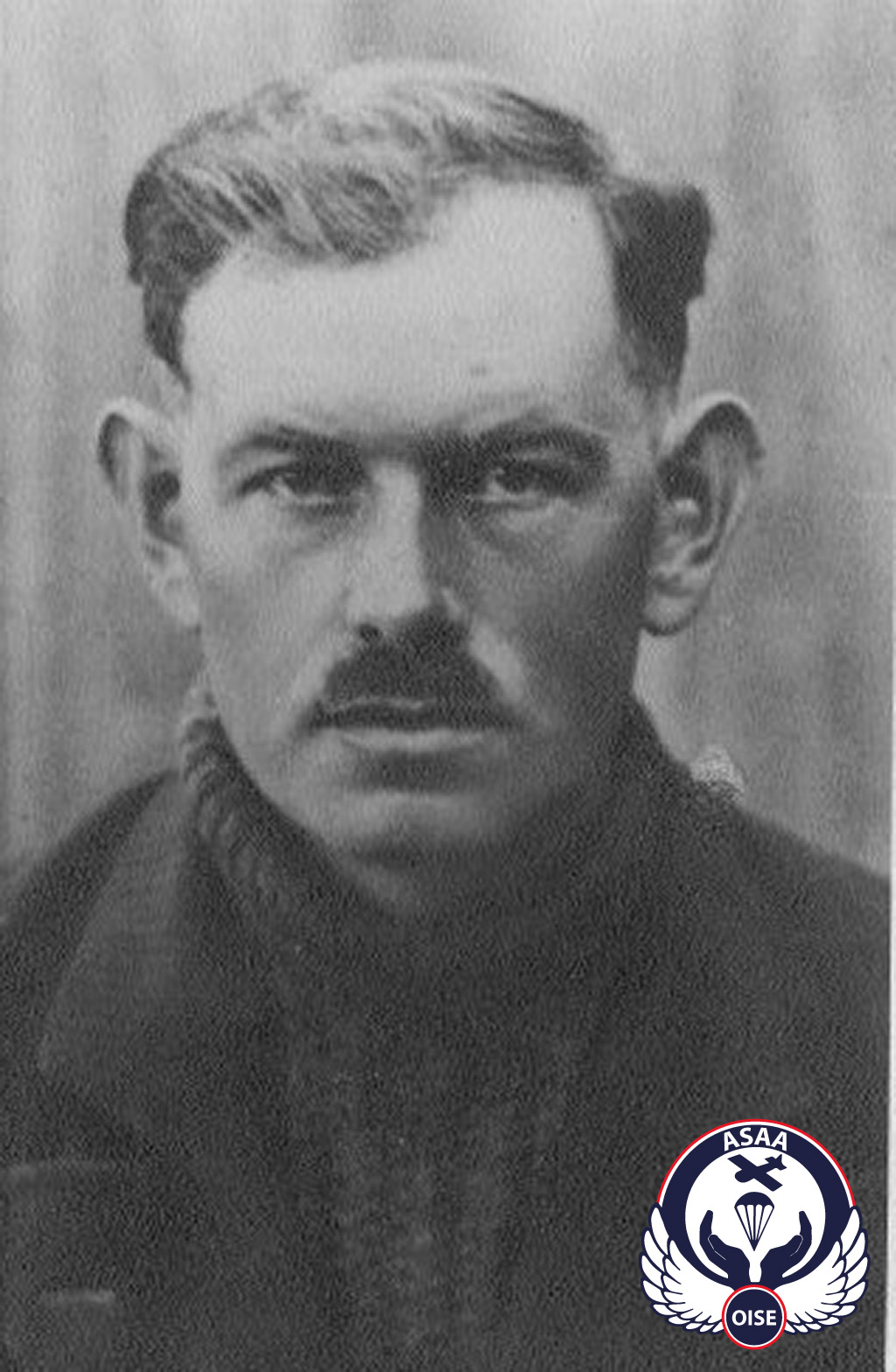
Henri Vincenot
On September 15, 1943, Marie-Thérèse, the wife of Charles de Jandin, owner of Château de Plainval, watched from her upstairs bedroom a large white parachute descending rapidly into the park. Her mother, Madeleine de Maissin, and her sister-in-law, Anne-Marie, immediately ran to this stranger who had fallen from the sky, to rid him of his parachute, which had become entangled in a row bean plant. The airman turned out to be 2nd Lt. James Bormuth. Fearing the arrival of the Germans, de Jandin's family quickly hid him in a corner of the park until nightfall.
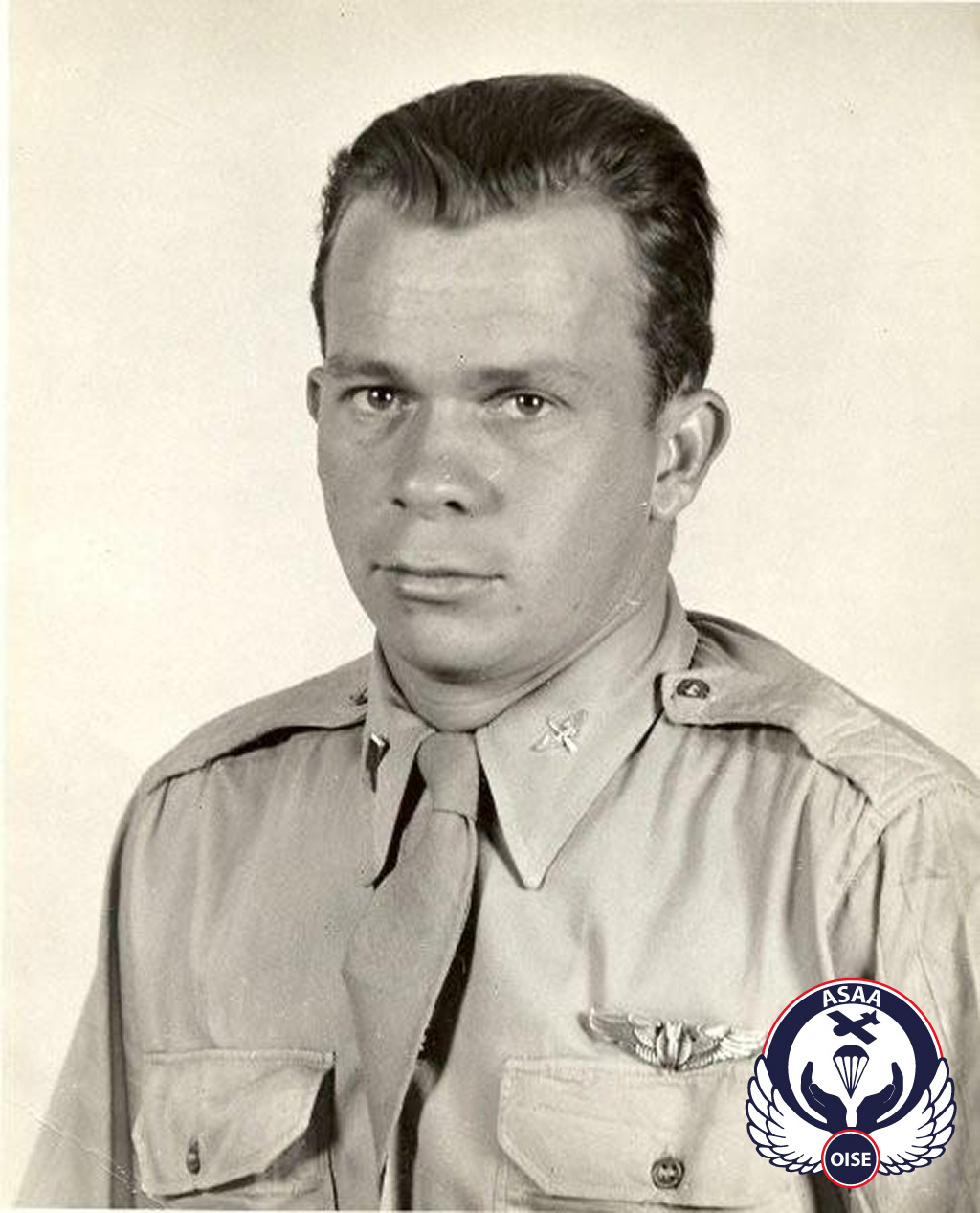
2nd Lt. James Bormuth
The next morning, in addition to food, Charles and Pierre de Jandin brought him civilian clothes, cigarettes and English-language reading material. Talking with him, they asked: “What are the instructions if you bail out?" James Bormuth replied, “If we fall in Germany, we're lost, but if it's in France, we know we can trust the French peasants, and that's what I'm doing!”
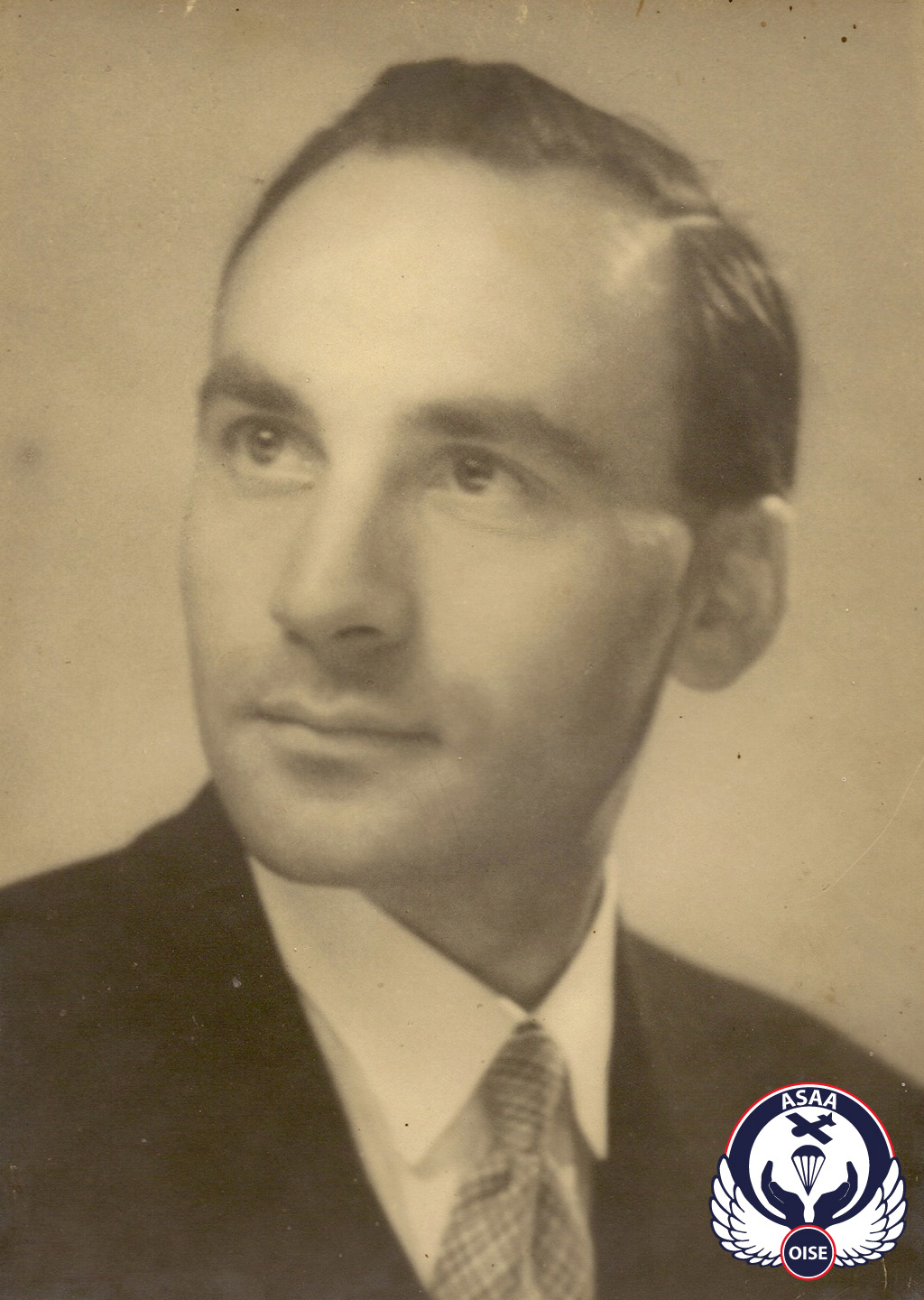
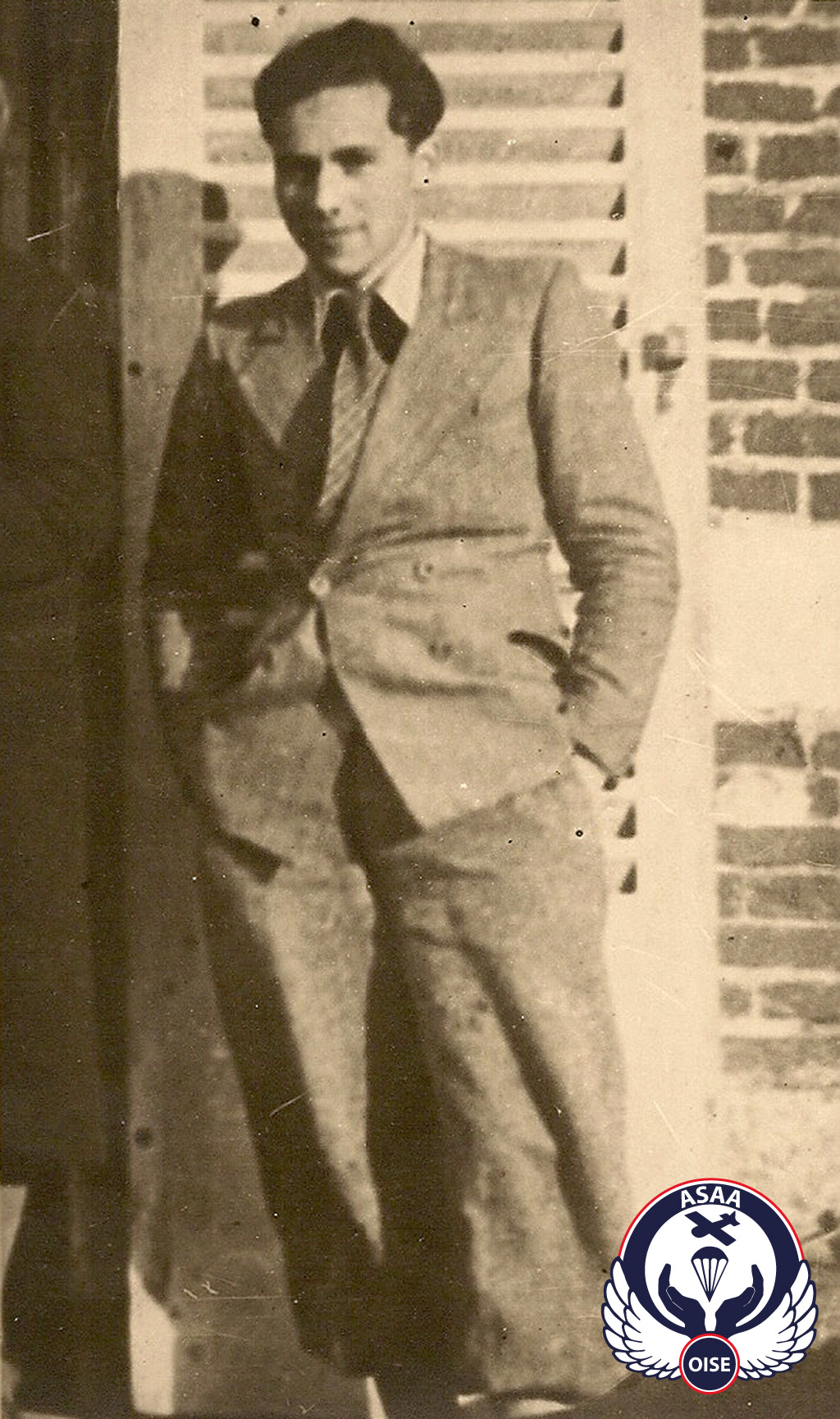
Charles de Jandin Pierre de Jandin
Enlisted in the French 1st Army in October 1944.
Died for France at Huningue (Haut-Rhin)
on December 1, 1944 during the fighting in Alsace.
Dr Edmond Caillard, from Saint-Just-en-Chaussée, had meanwhile been contacted by a young woman, a friend of de Jandin's family. On the evening of September 17, he transferred 2nd Lt. Bormuth in his car to the Château of Wavignies, having previously put a bloody bandage on his head. In the event of a check-up, Dr. Caillard could pretend to take a wounded man to hospital. In Wavignies, he was taken in by the Vincenot family where he met Wendell McConnaha.

Dr Edmond Caillard
On September 21 (or 22, according to Trigg), James Bormuth and Wendell McConnaha arrived by car at the Fleury family home in Clermont, where they stayed for 18 days, reunited with their crewmates Edward Daly and Hobart Trigg.
The following afternoon, September 18, Edward Daly was accompanied by two men, one of them a 20-year-old named “Guy”, and taken by bicycle to the village of Rémécourt, to the home of “Guy”, whose brother was a schoolteacher.
S/Sgt. Hobart Trigg landed by parachute near the village of Montiers, some 300 m from where his aircraft fell. As he tried to unhook his parachute from a tree, a group of Frenchmen approached. He chose to move away in the opposite direction. As he had been taught to do, he decided to keep out of sight for the first few hours of his escape. As night fell, he moved cautiously and found himself near the village of Moyenneville. An abandoned barn provided shelter for the rest of the night and the following day. In the evening, he approached a couple in a field, but the man was suspicious and threatened him with a stick. Hobart Trigg showed him the “USAAF” label on his shirt, got some food and then continued on his way. The next night was spent in a haystack. The next night was spent in a farmer's shed. The next morning, September 18, a dozen men arrived. His blond hair, blue eyes and “Yeah” answers (phonetically similar to the German “Ja”) made Hobart Trigg suspicious. He had to convince them. Luckily, one of the Frenchmen understood English. He asked him to write down the names of his crew. It turned out that the names matched those annotated on a paper brought by the men. Everyone became friendly. He was fed and provided with civilian clothes. His uniform was bagged and burned. In the evening, he was taken to Rémécourt, where he was reunited with Edward Daly.
The next day, Edward Daly and Hobart Trigg were driven to Clermont, (Trigg on a motorcycle and Daly in a car), to the home of Georges Fleury.
S/Sgt. Edward Fontaine landed in a pasture between two frightened cows. After gathering up his parachute, he discarded it in some tall grass and ran off as night fell. A few hundred meters further on, he hid in a field of tall grass to spend the night. The next morning, September 16, after moving to a haystack, he was approached by a young boy who brought him some civilian clothes. Edward Fontaine's origins meant he spoke French. The young Frenchman explained that, being from a poor family, he couldn't help him any further. Resuming his walk, he reached another village (Saint-Aubin-sous-Erquery?) where he was approached by two women in a cart. They took him to a farm. One of them, Madame Pol (or Paul), hid him in a wood near Erquery. Having become aware of the airman's presence, Paul Bruyer picked him up in the evening and took him to his home in Catenoy. Despite all the risks, Paul Bruyer and his wife Marie sheltered Edward Fontaine until October 2, when Alfred Normand, director of the Catenoy chemical plant, drove him to his home on Avenue Foch in Senlis. During his short stay in Senlis, Alfred Normand described the locations of enemy military installations in the area, potential targets that Edward Fontaine would have to pass on to his superiors on his return to England.

Edward Fontaine with the Bruyer family in Catenoy, September 1943.
2nd Lt. Donald Smith, who had tried to escape alone for a few days, was taken prisoner and sent to Stalag 7A in Moosburg, Germany.
T/Sgt. Orval Parsons, wounded in the leg by a piece of Flak, received a shot of morphine from Donald Smith before bailing out. He hid for two days in a wood, where he was helped by some Frenchmen. He was treated by a doctor who decided, given the seriousness of his wound, that it would be better to hand him over to the Germans. Sent first to a hospital, Orval Parsons then spent the rest of the war in Stalag 17B in Krems-Gneixendorf, Austria.
In Clermont, seven airmen from the crew were now divided between two families:
- Arthur Vetter, Warren Lush and John Wagner at Gaston Legrand and Odette Sauvage's home on rue du Châtellier, near the Kommandantur. Dr Roger Bouchard came regularly to treat John Wagner's leg. On September 27, two other American airmen, Francis Anderson and William Boren, joined them after staying with the Fleury family.
- Wendell McConnaha, James Bormuth, Edward Daly and Hobart Trigg, on rue de Mouy at the home of Georges Fleury, alias “Carrière”, in charge of the OCM's Centre-Oise sector.
The airmen were photographed in order to establish their false identity cards.
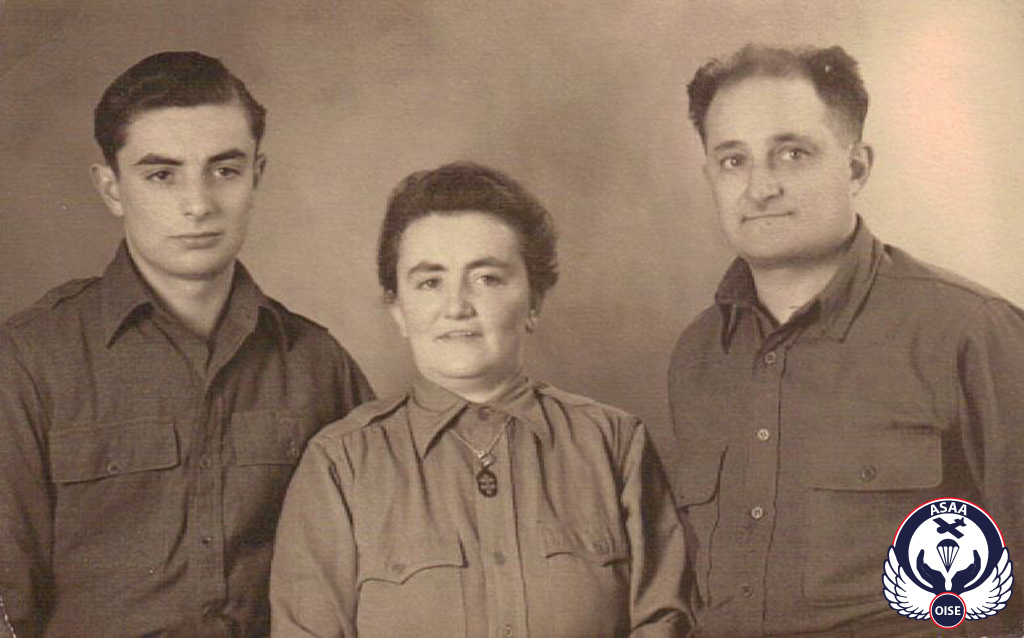
Edmond Sauvage (Odette's son),Odette Sauvage and Gaston Legrand
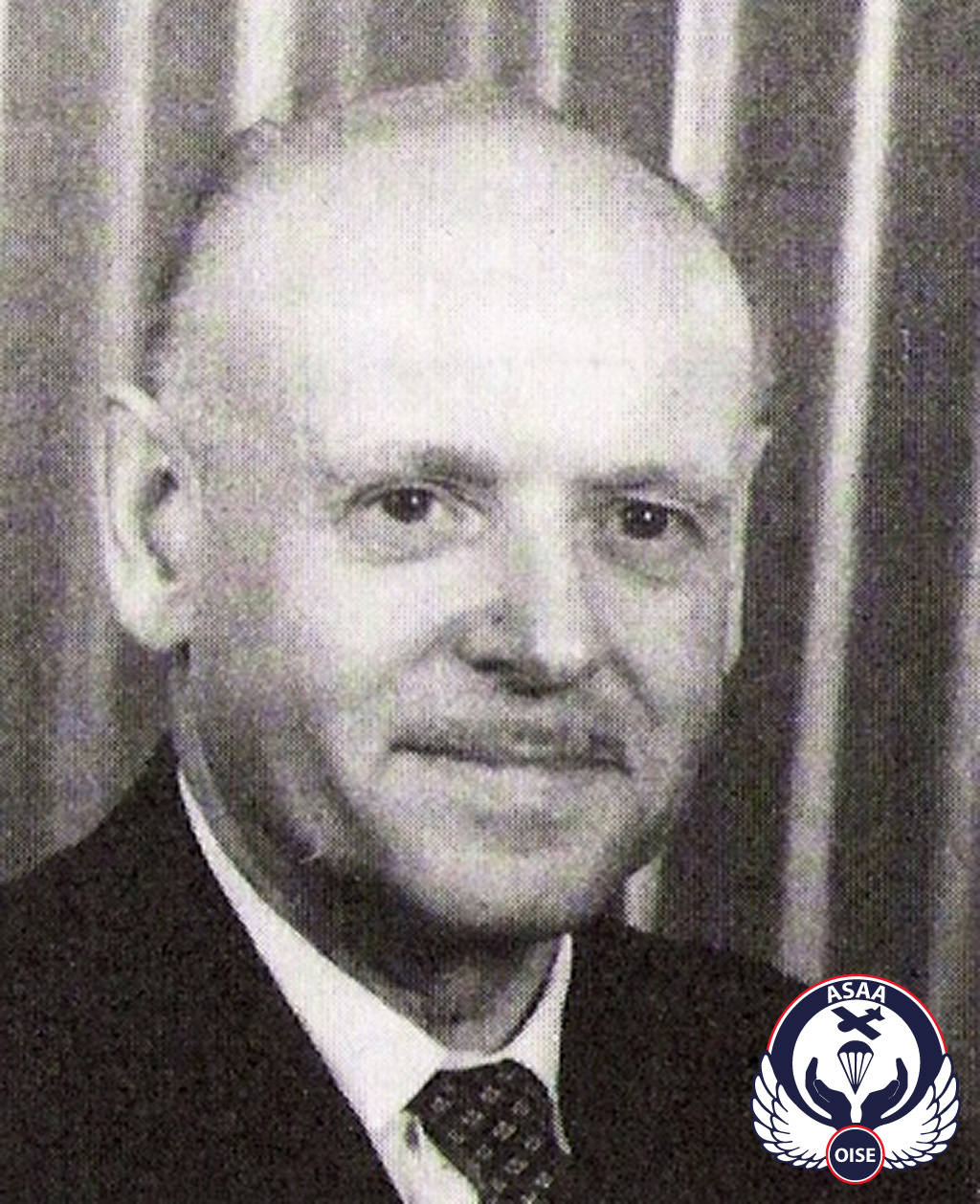
Georges Fleury

From l. to r.: Hobart Trigg, Jean Bourdon, Alain Fleury, Wendell Mc Connaha,
James Lartizien (medical student), Edward Daly and James Bormuth.
They were well built... especially Trigg, nicknamed “Big Baby”, who was quite greedy by nature. One day, my mother grabbed a big jar of blackcurrant jelly from the cupboard and put it on the table. Trigg took the jar and poured the entire contents onto his plate. In no time at all, the blackcurrant jelly was gone and everyone started laughing...!”

(Jean Bourdon, known as “Petit Jean”, a compulsory labor service refractory, later joined the Saint-Quentin Resistance.
He was murdered at the end of August 1944 by an SS unit in Urvillers (Aisne) after having been horribly mutilated).
Rabbits raised in the backyard ended up on plates, to the astonishment of Americans who had never eaten them before. The strong-smelling cheese was also a memorable experience.
On October 9, James Bormuth, Wendell McConnaha, Edward Daly and Hobart Trigg left Clermont and were taken in a vehicle to Creil. They were met by a guide before boarding a train for Paris. On arrival in the capital, the four airmen were taken to an apartment and then separated. They were now in the care of the Burgundy escape network.
On December 12, they were transferred to the Figueras camp, where they remained for around two weeks.
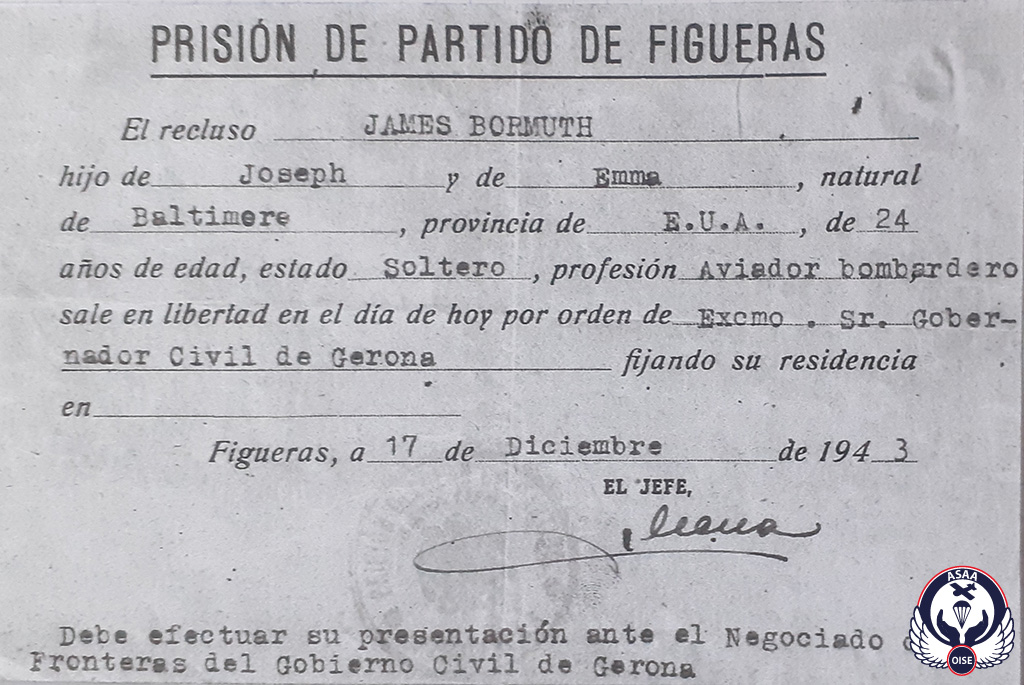
Freed after intervention by the British and then the American consulate, the airmen were taken to Girona. Transferred to Madrid, they reached Gibraltar on December 31. On January 4, 1944, James Bormuth was flown back to England. On January 29, he returned to the USA, working as a bombardier instructor until he was discharged from the Army in August 1945.
That evening, they made their way to Austerlitz station, where they joined a group of British and American airmen. They arrived in Bordeaux on March 4, where Robert and Andrée Delbur looked after them until their departure for Pau on March 30. With a group of escapees, Edward Daly and Hobart Trigg crossed the Spanish border on the night of March 31st to April 1st. They reached Gibraltar on May 15, finally landing in England on May 21, 1944.
With false identity papers supplied by Georges Fleury, Arthur Vetter, John Wagner and Warren Lush left Clermont at around 1:30 p.m. on October 12, guided by Alain Fleury and another man. On arrival in Paris, the three airmen were separated and handed over to other guides, including Madeleine Mélot (a 60-year-old widow, known to the airmen as “The lady in black”) and Gabrielle Wiame. Arthur Vetter was taken to Saint-Mandé to stay with Gérard and Geneviève Moët and their 17-year-old daughter Michèle, John Wagner with Madeleine Mélot, rue Larrey, Paris 5th and Gabrielle Wiame took Warren Lush to stay with the Bourry family, rue Montmartre, Paris 1st, where he remained until December 4. During the 8 weeks he spent with the Bourry family, Warren Lush occasionally went out to visit Paris accompanied by his helpers, even going to a show at the Folies Bergère.
Madeleine Mélot, who gave shelter to many Allied airmen, was arrested by the Gestapo at her home on November 19, 1943. Imprisoned for 6 months at Fresnes, she was deported in May 1944 to the Ravensbrück concentration camp. She was liberated in April 1945.
Denounced, the Moët family was arrested on April 28, 1944. Gérard Moët was deported and died in Buchenwald in March 1945. Geneviève Moët and her daughter Michèle were deported to Ravensbrück and survived the hell of the concentration camp.
During his stay, Arthur Vetter was taken with a few other airmen for a walk around Paris. In defiance of the enemy, Burgundy network agent Jean Carbonnet discreetly filmed the escapees strolling among the occupying troops at the Vincennes zoo.

Arthur Vetter at the Vincennes zoo among German soldiers (Photo Michèle Moët-Agniel)
On November 14, Michèle Moët took Arthur Vetter to the Jardin des Plantes, where he joined other escapees. They were handed over to a guide, Jean-Louis Kervévan, alias “Johnny”, who took them to the nearby Austerlitz station. He then took them to Toulouse and Carcassonne. Handed over to another guide, the airmen took a train back to Quillan, where they waited for three hours in a café for the ferryman to take them to the Spanish border. The group, comprising 5 airmen and 6 Frenchmen, arrived in Spain on November 18 after several days of arduous walking in bitter cold, which caused frostbite to Arthur Vetter's feet. They reached Gibraltar on December 2 and flew to England on the night of December 10-11, 1943.
After two weeks, John Wagner was taken to the apartment of Jean-François and Laure de Traz, rue de Miromesnil, Paris 8e. On October 30, Dr. Alice Willm, their neighbor, entrusted him to a young woman who took him to the home of Jeanne Delapraye, a grocer on rue Beaumarchais in Montreuil-sous-Bois, where he spent the night. The following evening, October 31, a young girl took him by metro to the Austerlitz Station. Handed over to a guide, John Wagner and his group of escapees took an overnight train to Toulouse, arriving in Perpignan at around 6pm the following day. Two girls took over and accompanied them on bicycles to meet their smugglers. They spent the night and the whole of the following day hiding in bushes before setting off for the border at dusk and in the pouring rain. They arrived in Spain on November 4. On November 6, John Wagner and part of his group were arrested by Spanish soldiers and taken to Figueras, where they were imprisoned for 6 days. Intervention by the Consulate led to their release. They were transferred to Girona, Saragossa, Alhama de Aragon, and then on to Madrid. Arriving in Gibraltar on November 28, John Wagner finally returned to England on December 3, 1943.
On December 9, the group set off for the Spanish border, which they crossed on the night of December 10-11. Via Gibraltar, Warren Lush flew back to England on January 5, 1944.
On the Spanish side, the group was intercepted by the Guardia Civil. After being imprisoned, the escapees were transferred to Zaragoza on November 12, where Edward Fontaine made contact with the American Consulate. He finally reached Gibraltar on December 15, before reaching England on December 18, 1943.
July 2010 - Visit from Kathleen Bormuth, daughter of 2nd Lt.James Bormuth.


